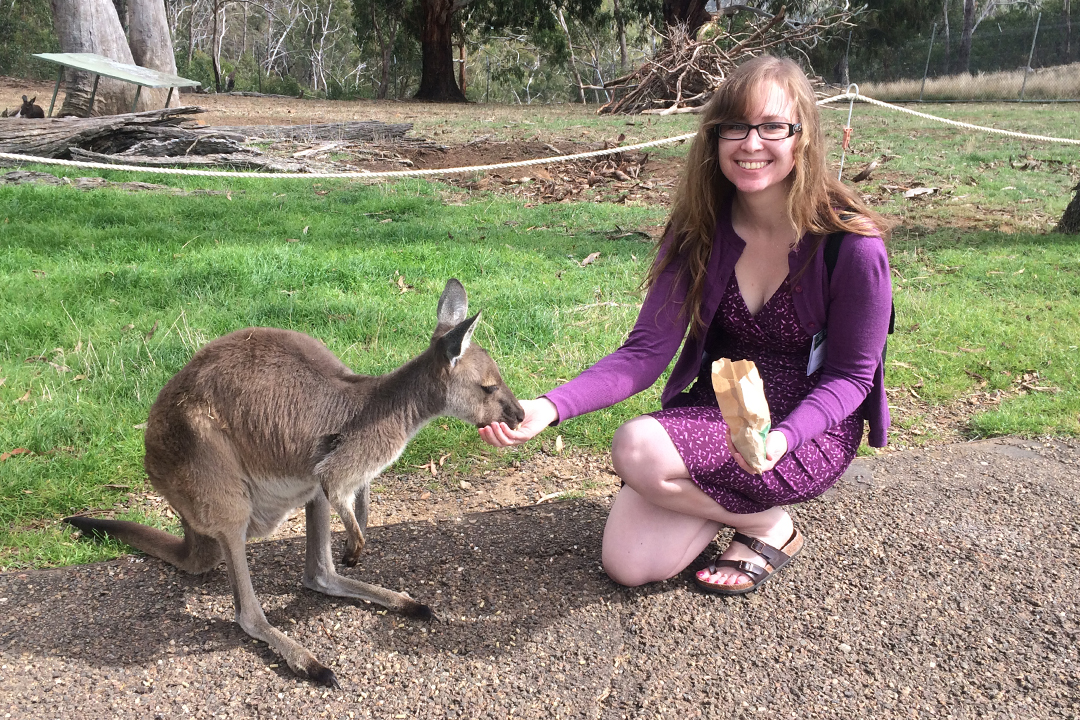
Six tips for studying abroad
If Kelly Summers could do it all over again, she would jump at the chance to study abroad much earlier in her student life.
By Colleen MacPhersonSummers, a PhD student in the Department of Chemistry, spent three months in Adelaide, Australia this year collaborating with researchers at the university there. It was the experience of a lifetime, thanks to a Michael Smith Foreign Study Supplement, and one filled with many more lessons than the ones she learned in the lab.
Lesson #1: Don’t wait
Summers did her undergraduate and master’s degrees at Western University and knew there were study abroad opportunities, but she would not allow herself to deviate from her plan.
“If I wasn’t in class or studying I was working because I was determined not to have any debt, but I wish I’d made the time,” she sais. “I wish I hadn’t focused so hard on financial issues.”
While she does not advocate reckless spending, “taking out a $5,000 loan, or even $10,000 to help with financing a trip would have been worth it. I was lucky to be able to go as a grad student but as an undergrad, that’s your chance. Take all of those opportunities while you can.”
Lesson #2: Dream big
Summers’ research centres on the role of copper in health and disease, and because she was already collaborating with a colleague there, Adelaide was the obvious destination of choice. She could have gone to California where she has other colleagues, she said, “but I can go to California any time.”
Even without academic connections, “I think most professors or supervisors are open to having visiting students, especially if they come with their own funding.”
Studying abroad can be the chance to check something off the ‘I’ve-always-wanted-to’ list, she added. “Maybe there’s a professor emeritus somewhere who you’ve always admired. Why not go and just take his class?”
Lesson #3: Plan for planning
Putting together an overseas trip takes time. “There were a lot of frantic emails back and forth trying to set things up, including booking time on the synchrotron,” Summers explained. It was a process she describes as quite stressful, and she advises allowing lots of time to put all the pieces into place.
Her trip was also a reminder that universities around the world operate on different schedules.
“I arrived at the University of Adelaide in March but it turns out their term starts in February. Knowing that would have made it easier for me to find accommodation, I think. Be flexible with your dates,” she added, so that overseas study coincides with different academic timetables.
She eventually found a place in a graduate housing unit: “a tiny bachelor pad, quiet and clean. You won’t be making a turkey dinner there but it ticked the main boxes for me.”
Lesson #4: Look up from your books
One interesting aspect of Summers’ trip was observing the inner workings of another post-secondary institution.
“Going to another university you get a chance to see how things can be different: everything from their standard operating procedures in labs, how their physical space is set up and just their education system.”
Of particular note for Summers is that grad students in Australia have very few opportunities to teach. That has its pros and cons, she said, “but if I hadn’t had the chance to work as a TA (teaching assistant) while I was doing my master’s, I never would have discovered how much I love teaching.”
Lesson #5: Meet people
“I tried to go to all the events and seminars I could so I would get to know people,” Summers said. “The residence where I stayed was really good at putting on events like movie night in the lounge.” It was there she also met other international students and compared notes on their shared experience.
Lesson #6: See the sights
It wasn’t all work and no play for Summers. She found a company that offered small bus tours, so she “squeezed in a couple of sightseeing things near Adelaide.” Using the company saved her having to make travel arrangements, and having to drive on the ‘other’ side of the road. “My left hand doesn’t know how to shift.”
Then, when her research was done, Summers took three weeks to see more of the country—Alice Springs, Darwin, the Great Barrier Reef, Whitehaven Beach on the Whitsunday Islands and, of course, Sydney, “because I had to see the opera house.”
To learn more, visit the U of S Study Abroad website or check out the Arts and Science Study Abroad Fair.
Colleen MacPherson is a Saskatoon-based freelance writer.

